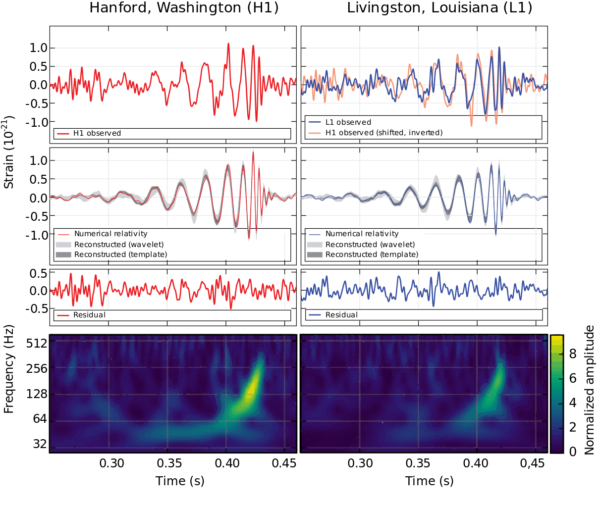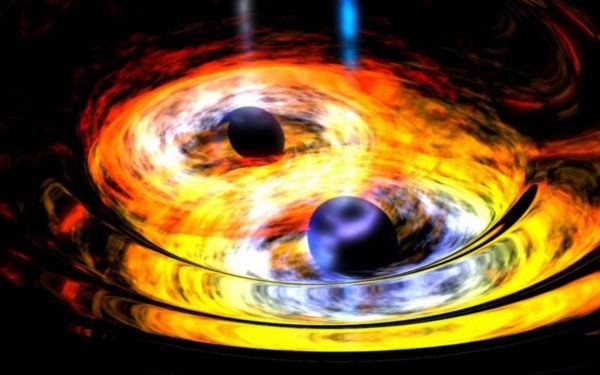"Black holes can bang against space-time as mallets on a drum and have a very characteristic song." -Janna Levin
If you had told an astrophysicist five years ago that binary black holes were common, that would’ve been news, but not surprising. If you had told them that ~30 solar masses was a good estimate for each one of their masses, though, you might have had to pick their jaws up off the floor. Yet LIGO’s very first detection showed us exactly that, much to the surprise of many.
 The inspiral and merger of the first pair of black holes ever directly observed. Image credit: B. P. Abbott et al. (LIGO Scientific Collaboration and Virgo Collaboration).
The inspiral and merger of the first pair of black holes ever directly observed. Image credit: B. P. Abbott et al. (LIGO Scientific Collaboration and Virgo Collaboration).
So how did these black holes come to be? After much numerical study, it appears that young, metal-poor stars about 40-100 solar masses each conspired to create these binary black hole pairs, with only one of the members resulting in a supernova. The rest is cosmic history.


In this close supermassive binary scenario, the heavier star (A)
goes SN, and then strips the outer layers off the companion B. Now supposedly B collapses more or less directly into a BH. Which one ends up as the heavier BH? A because it was more massive, or B because the collapse is more efficient?
With the caveat that the Forbes blockade is so broken that I can't pass Go regardless, no, if the subject is this, there are no SNe involved. (I also wouldn't call that a "discovery," but like I said, I can't see the original.)
I think Ethan's headline is a bit misleading. Most people would understand "origin" as meaning "point in space", or at least "direction".
What he has claimed as "origin", is in fact a theoretical discussion of the sort of object which could have produced the waves.
Please don't associate me with you know who...I'm just suggesting there should be strict objectivity in discussing these things..